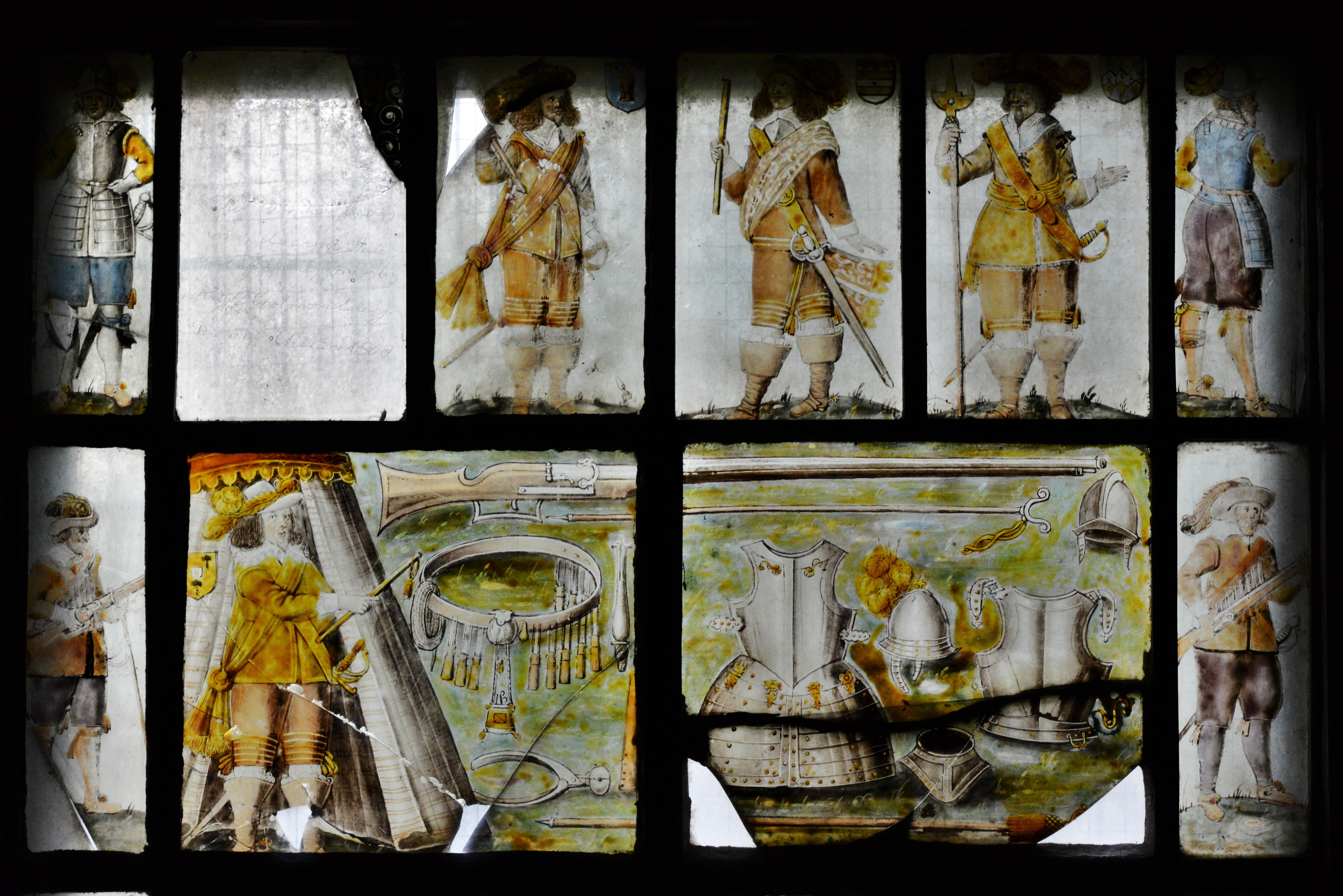St Chad
Holt, Wrexham
St Chad's church in Holt is a marvellous historic church, built largely of red sandstone, on the banks of the River Dee, just barely inside Wales.

Dedicated to St Chad, who died in AD 672, and listed in the Domesday Book, the outline of the present building dates from the 14th century.
Farndon, Cheshire
During the Civil War fighting reached the churchyard and such extensive damage was inflicted that in 1658 the church, except the tower, had to be completely rebuilt. You can still see the Civil War window commissioned in 1662. Further changes were made during the 19th and 20th centuries.
Dedicated to St Chad, who died in AD 672, there may have been wooden buildings here from Celtic times. In 1086 the Domesday Book records a village priest and two other priests with land in the area. The outline of the present building and the tower date from the 14th century, about the time that the bridge was built over the Dee at Farndon.
The church's role in the Civil War was exciting. In 1643, when Sir William Brereton, commander of the Cheshire and Lancashire Parliamentarian forces, was using it as a barracks for his troops, the building suffered extensive damage.
The Parliamentarians needed to force a passage over the Dee and invade the Royalist stronghold of Wales. On 9th November some 2,000 Roundheads were assembled near the bridge, on which the Royalists had built a defensive gatehouse. On the opposite bank, the Royalists were well prepared, their ranks swelled by extra troops from Ireland. Brereton distracted the defence by marching a detachment of his troops down river. Then a second division attacked the bridge with the full force of their grenades, and broke through. Both sides fought backwards and forwards along the bridge and as far back as Farndon churchyard. In the confusion of battle few even noticed that the church roof was ablaze. Although severely damaged, Farndon church remained a garrison until the winter of 1645, when, after further heavy fighting, advancing Royalists forced the Roundheads to flee, leaving the church derelict.
In 1658 the church, except the tower, had to be completely rebuilt. This resulted in inconsistencies in the style of the present building. You can still see the Civil War window which was commissioned by William Barnston in 1662.
Further changes and restoration were made during the 19th and 20th centuries, resulting in the church you find today, at peace to serve the local community.
It is said that John Speed, England's most famous Stuart period mapmaker, first began to study ‘the land that is afar off’ from the tower of Farndon church. The son of the village tailor, he was baptised here in 1552.
Holt, Wrexham
St Chad's church in Holt is a marvellous historic church, built largely of red sandstone, on the banks of the River Dee, just barely inside Wales.
Rossett, Clwyd
The first church on this site was completed in 1841 but suffered significant fire damage, in May 1891 it was reported that that the Vicar had ‘conducted a wedding in the ruins’.
Gresford, Wrexham
Very fine misericords and carvings, a wealth of medieval glass, a memorial to 266 miners and a peal of bells which is one of the Seven Wonders of Wales.